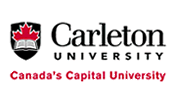 |
|
||||
[PDF]
- DAVID ACHESON, Jesus College, Oxford
1089 and All That [PDF] -
Why are so many people scared stiff of mathematics? All too often, the real truth is that they have never been allowed anywhere near it, and one of my ambitions is to bring some of the ideas and pleasures of real mathematics to a wide public. One way of doing this, I believe, is to emphasize the element of surprise in mathematics. In the lecture I will start with a simple number trick that always leads to the answer 1089, and will go on to discuss many other surprises in mathematics and its applications, including elementary geometry, chaotic pendulums, and electric guitar dynamics. I will even examine whether mathematics can explain the Indian Rope Trick, which is perhaps the most famous illusion in the whole history of magic. Most importantly of all, however, I will suggest ways in which anyone can appreciate that mathematics has a certain magic of its own.
- FAN CHUNG, University of California, San Diego
New Directions in Graph Theory [PDF] -
Nowadays we are surrounded by numerous large information networks, such as the WWW graph, the telephone graph and various social networks. Many new questions arise. How are these graphs formed? What are basic structures of such large networks? How do they evolve? What are the underlying principles that dictate their behavior? How are subgraphs related to the large host graph? What are the main graph invariants that capture the myriad properties of such large sparse graphs and subgraphs. In this talk, we discuss some recent developments in the study of large sparse graphs and speculate about future directions in graph theory.
- GILLES GODEFROY, Université Paris 6-CNRS, 175, rue du Chevaleret, 75013 Paris
Non-linear geometry of Banach spaces [PDF] -
A Banach space is in particular a metric space. Is it so that isomorphism really changes when linearity is dropped? In other words, if two Banach spaces are Lipschitz isomorphic, does it follow that they are linearly isomorphic? This natural question turns out to be very hard to answer. Some progress has been made in the last fifteen years towards a better understanding of this problem (and of the corresponding embedding problem) but the subject is still in its infancy. This talk will present some recent results and simple-to-state but exciting open questions. An effort will be made for dispensing as much as possible with technicalities.
- SORIN POPA, UCLA, Math. Dept., 405 Hilgard Ave, Los Angeles, CA 90095-1555
Rigidity in von Neumann algebras of group actions [PDF] -
A free ergodic measure preserving action of a countable group on a probability space, G\curvearrowright X, gives rise to a von Neumann algebra (called II1 factor) L¥ (X) \rtimes G, through a natural crossed product type construction. In general, much of the initial data G\curvearrowright X is "forgotten" by the isomorphism class of L¥ (X) \rtimes G, for instance all free ergodic probability measure preserving actions of amenable groups give rise to isomorphic II1 factors.
But a rich and deep rigidity theory underlies the non-amenable case. I will present some recent results in this direction, one of which shows that any isomorphism of von Neumann algebras associated with Bernoulli actions G\curvearrowright [0,1]G, L \curvearrowright [0,1]L, of Kazhdan groups G, L, comes from an isomorphism (conjugacy) of the actions. Some related cocycle rigidity results for group actions G\curvearrowright X will be discussed as well.
- LAURENT SALOFF-COSTE, Cornell University, Department of Mathematics, Malott Hall, Ithaca, NY 14850, USA
The heat kernel on connected sums [PDF] -
On the one hand, there is a large class of Riemannian manifolds for which the heat kernel, the fundamental solution of the heat equation, satisfies sharp two-sided Gaussian bounds. This class, call it H, includes all complete manifolds with non-negative Ricci curvature and many more. On the other hand, it is very hard to say something about the large scale behavior of the heat kernel on a general complete Riemannian manifold. The aim of this talk is to describe the behavior of the heat kernel on any manifold that is the connected sum of finitely many manifolds of type H. There are many concrete interesting examples of such manifolds, the simplest of which may be the connected sum of two (or more) Euclidean spaces.
- MARK SAPIR, Vanderbilt University
Residual finiteness of 1-related groups [PDF] -
We prove that with probability tending to 1, a 1-relator group with at least 3 generators and the relator of length n is residually finite, virtually residually (finite p)-group for all sufficiently large p, and coherent. The proof uses both combinatorial group theory, non-trivial results about Brownian motions, and non-trivial algebraic geometry (and Galois theory).
This is a joint work with A. Borisov and I. Kozakova.
- KEITH TAYLOR, Dalhousie University, Halifax, NS
Mathematics: The Sacred-Profane Dichotomy [PDF] -
This talk will explore the contrasting ways in which mathematics is viewed by various constituencies. There is often a disconnect between what mathematicians believe should be core curricular material and what the rest of the university feels is most important. The key to this disconnect is in the very meaning of the word "mathematics".





